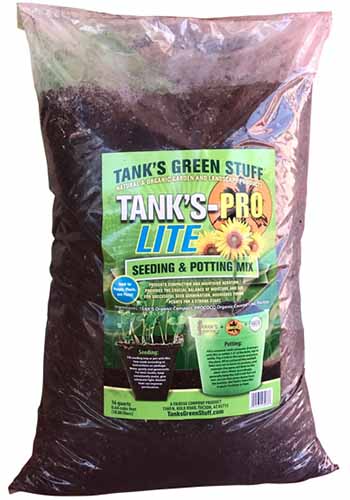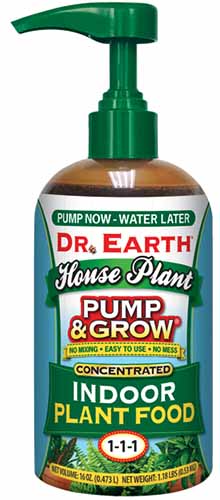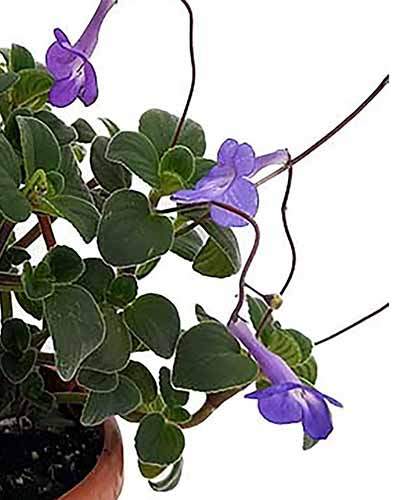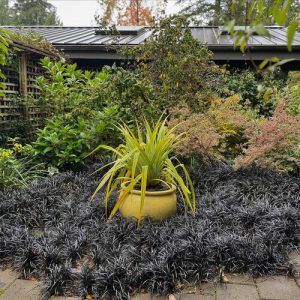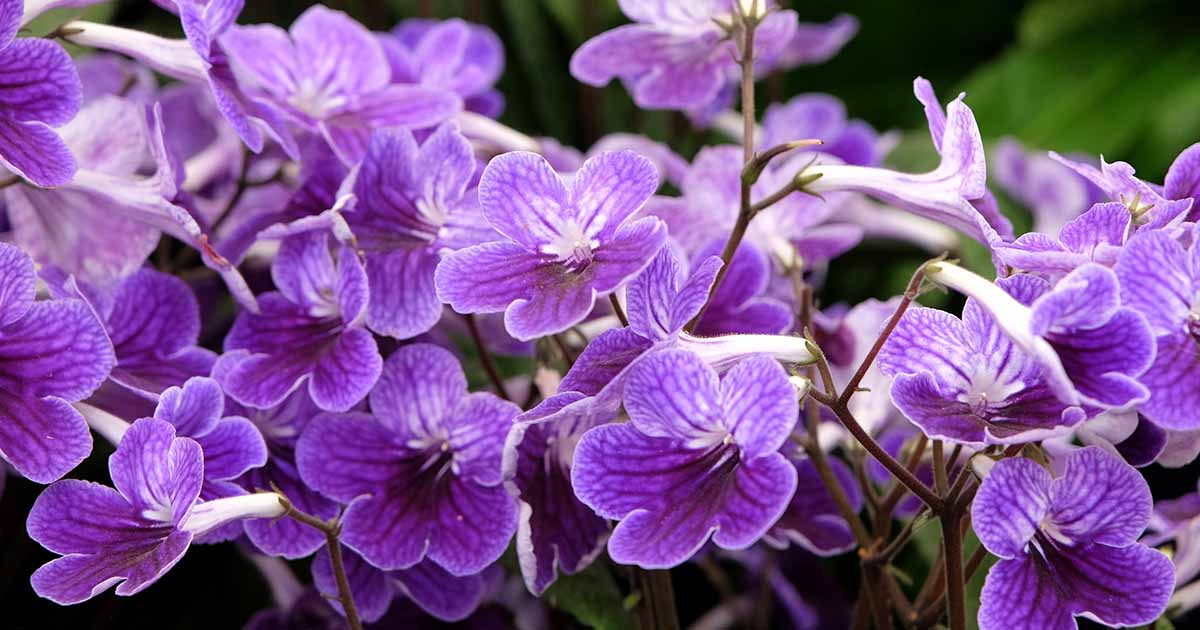
Streptocarpus spp.
Let’s be honest, there aren’t that many flowering houseplants.
I love a pretty orchid or a peace lily as much as the next gardener, but even though they have long-lasting blooms, they don’t compare to the floral show of a Cape primrose.
Also commonly called Streptocarpus after their genus name, not only do they bloom with colorful blossoms, but some Cape primroses flower year-round or repeatedly throughout the year.
It’s like having a non-stop flower garden in your home.
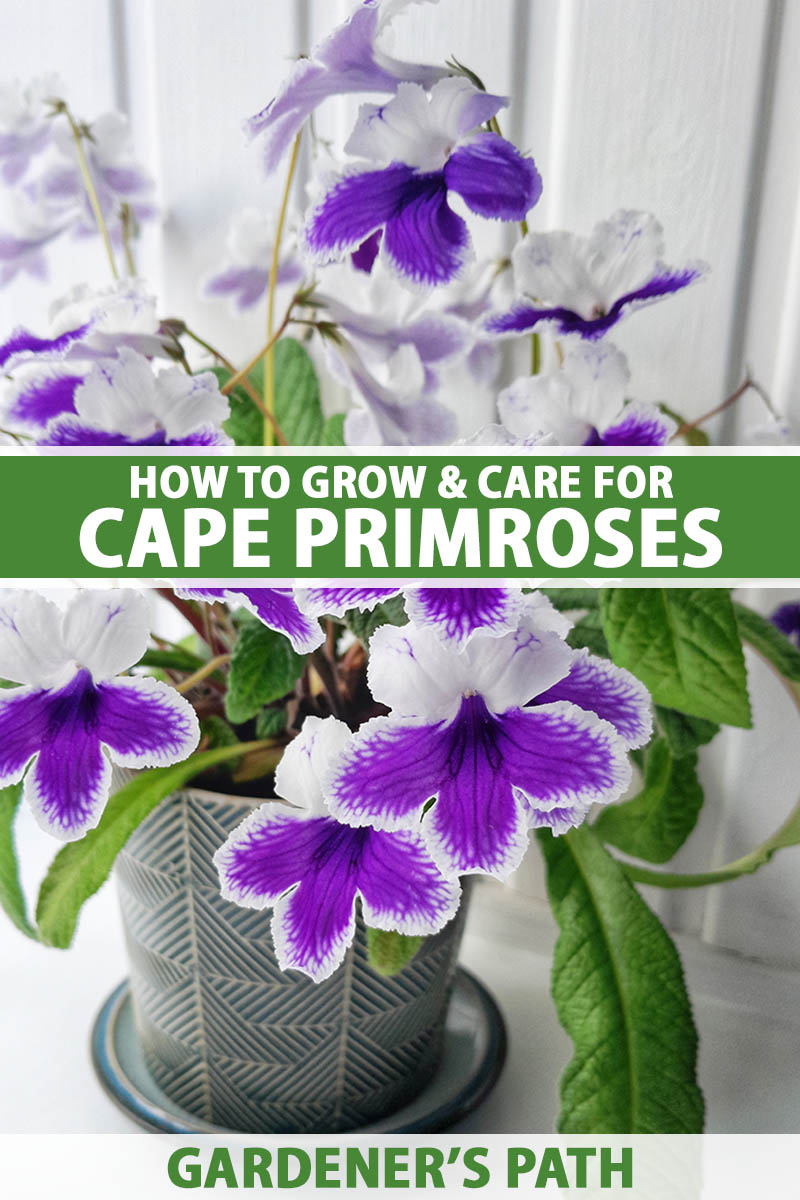
We link to vendors to help you find relevant products. If you buy from one of our links, we may earn a commission.
I’d be willing to pamper Cape primroses to keep the endless display going, but you don’t have to.
They’re tough little plants, despite their elegant appearance, and they’re rarely troubled by pests or disease.
Ready to get to know these underappreciated beauties? Here’s what’s coming up in this guide:
The biggest challenge in growing Cape primroses is finding them!
You’re more likely to come across their close relative, the African violet, but keep your eyes peeled and you might get lucky.
Now, without further ado, let’s discuss where Streptocarpus came from.
Cultivation and History
Streptocarpus is indigenous to southern Africa. In the 19th century, English botanist James Bowie of Kew Gardens explored the Cape province of South Africa and Brazil looking for new plant species.
He came across S. rexii with its bold blue flowers and brought it back to Kew Gardens in England in 1827.
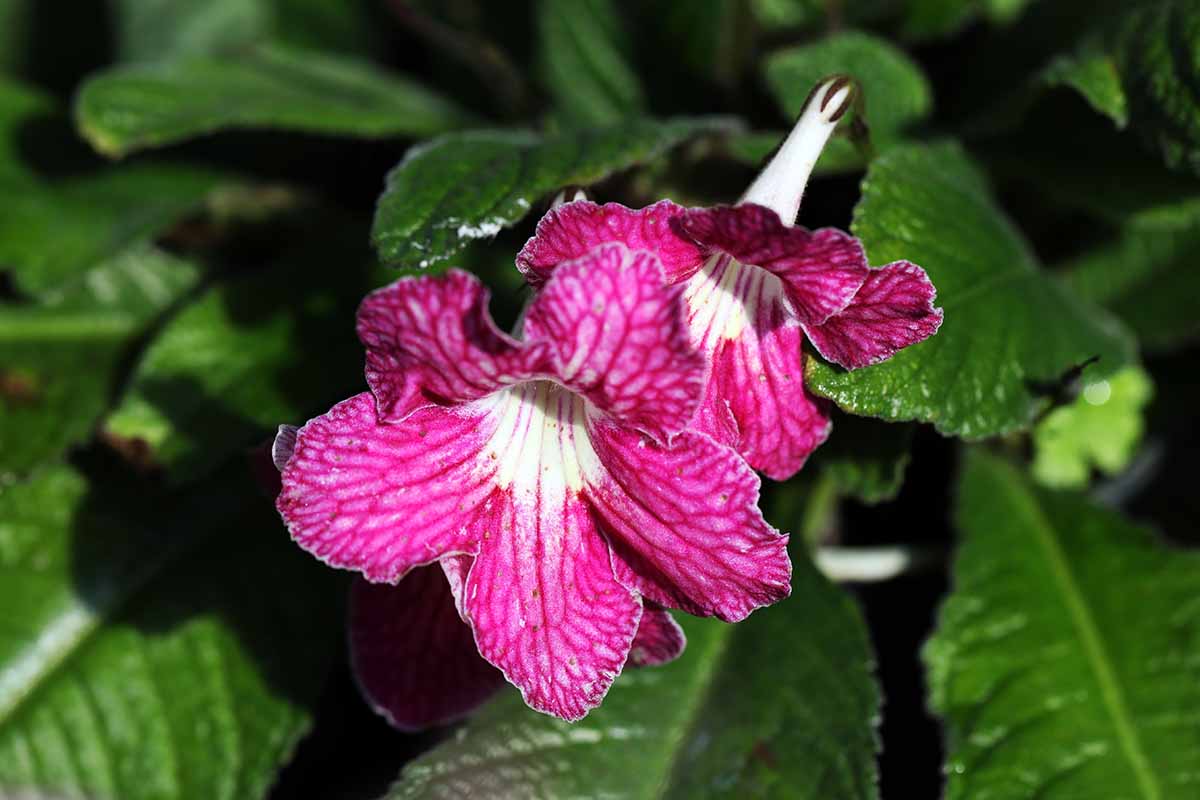
A few different Streptocarpus species were identified in the decades that followed, then in 1861, S. saundersii debuted at Kew Gardens, followed by S. parviflorus in 1882.
It wasn’t until 1946 that the first named Streptocarpus hybrid was cultivated.
It was bred at the John Innes Institute by William Lawrence and was named ‘Constant Nymph.’
But prior to that, breeders created many new and interesting unnamed Cape primrose hybrids that originated from the specimens brought back initially.

There are over 150 species within the Streptocarpus genus, but you’ll rarely come across a species plant on the market. Most of the plants for sale are hybrids.
Despite the name, Cape primroses aren’t related to true primroses. They just have similar-looking leaves.
While they were previously classified in separate genera, the closely-related African violet (formerly Saintpaulia spp.) is now included in the Streptocarpus genus. The plants look somewhat similar, but they have different growing requirements.
You can tell them apart because Cape primroses usually have long, primrose-like leaves, while African violet leaves are more oval, though there are some hybrids with the more rounded leaves.
If you’re looking for info on African violets, please visit our comprehensive guide.
In the wild, Streptocarpus species grow in forested areas under trees where they receive dappled sunlight.

There are two types of Streptocarpus plants. The first group (subgenus Streptocarpella) is made up of stemmed plants. This group includes the species S. saxorum.
The second is the stemless, rosette type (subgenus Streptocarpus), which includes the species S. rexii and a majority of the hybrids on the market.
The care is the same, they just have a slightly different growth habit.
Streptocarpus Propagation
As mentioned, most Cape primrose cultivars on the market are hybrids. These won’t grow true from seed and the seeds might even be sterile. So, if you opt to go the seed route, please keep that in mind.
If you want to propagate a clone, there are other methods. Let’s begin with starting seeds and go from there:
From Seed
Cape primrose seeds should be started in late winter or early spring. The plants will take up to 20 weeks to flower, so plan ahead if you have a specific flowering date goal in mind.
Fill a seed tray with a seed-starting mix. I’m a big fan of Tank’s Pro-Lite Seeding and Potting Mix because it has plenty of coconut husks and perlite for water retention and airiness.
Tank’s Pro-Lite Seeding and Potting Mix
Arbico Organics carries this in 16-quart bags.
Sprinkle the seeds on the surface of the soil. Streptocarpus seeds are teeny-tiny. When you open that seed packet or seed pod, you might think you’re dealing with dust.
If you’ve never worked with fine seeds before, it’s easiest to take a piece of paper and fold it in half. Pour the seeds onto the paper and then sprinkle them out of the edge of the paper, which acts as a funnel.
Spray with a water bottle to moisten the seed mix. Place the tray on a heating mat and in morning light or under supplemental grow lights. Cover the tray with glass or plastic to maintain humidity.
Be patient, germination takes a long time. You might not even see growth for two weeks and once they emerge, it will take a while for them to develop.
Once the Cape primrose seedlings are a quarter of an inch tall, thin them to about three inches apart. When they have true leaves, you can move the seedlings into individual pots.
From Leaf Cuttings
In spring or early summer, fill a seed tray with a soilless seed-starting mix. Look for young, healthy leaves toward the center of the plant. Remove the leaf with a clean, sharp pair of scissors and cut the leaf in half along the mid-rib.
Place the base of each of the leaf halves an inch deep in the potting mixture, with the leaves at least three inches apart. Set the tray in an area with bright, indirect light, direct morning light, or under grow lights.
Moisten the seed mixture without disturbing the leaves. Cover the tray with plastic or glass to maintain humidity. If needed, place a stick or broken chopstick in the tray to help prop up the cover so it doesn’t touch the leaves.
After a month or so, you will start to see plantlets forming on the edges of the leaves. Wait for these to grow and develop roots. Once they do, you can transplant them into individual pots.
By Division
Older Cape primrose specimens can be divided into sections and repotted. This is a smart way to deal with a plant that has outgrown its pot but you don’t want to go up a size.
Remove the original Cape primrose from the pot and with your hands, gently tease it in half or thirds.
You want each section to have at least one stem and roots attached. You might need to use a clean pair of scissors to tease the pieces apart.
Brush away some of the old soil from around the roots and pot them up as described below.
Transplanting
When you bring your Cape primroses home and repot them, they will be in a state of shock. They probably won’t adapt to their new conditions and start to grow for at least two weeks.
It’s nothing to worry about, I’m just a warning that you shouldn’t expect too much from your plants initially.
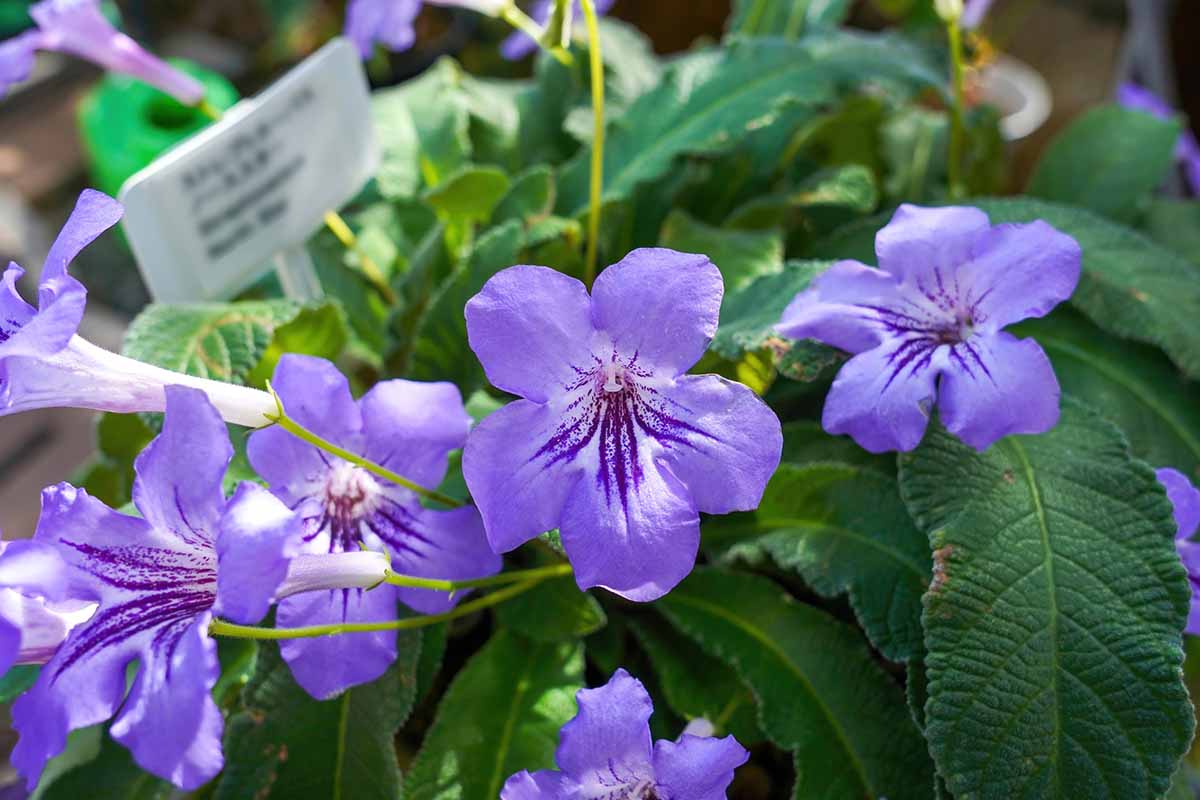
When selecting a container, the material doesn’t matter much. Unglazed earthenware like terracotta tends to dry out quicker than metal, plastic, or glazed earthenware.
That can be good or bad, depending on your watering habits. You can also use hanging planters for the rosette types.
To accommodate the root structure, wide, shallow pots are better than deep ones. Whatever you choose, it needs to have a drainage hole in the bottom to allow the water to run out. Cape primroses won’t tolerate soggy roots.
Fill the container with any water-retentive potting soil. They like slightly acidic to neutral pH, which is about what most potting soils are.
If you’re looking for suggestions, I’m the unofficial team cheerleader for Fox Farm’s Ocean Forest potting mix. I’ve yet to find a houseplant that doesn’t thrive in its mix of bat guano, earthworm castings, fish and crab meal, humus, and moss.
Pick up a one and a half quart bag in packs of one, two, four, five, eight, or ten at Amazon.
To transplant into a container, remove the plant from its existing pot and gently brush away the soil from the roots. Spread and detangle the roots a little.
Place the roots in the new container and fill in around it with potting soil.
Firm the soil around the base and water well. If the potting medium settles, add a bit more. You want the plant to be sitting at the same height that it was in the original container.
How to Grow Cape Primroses
Providing Cape primroses with adequate light is tricky. They want lots of bright light, but the heat of direct light in the afternoon is too strong.
If you have a location in an east-facing window or a south-facing window with sheer curtains, that’s ideal.
You can also use a west-facing window if you don’t live in an area that experiences sweltering summers.
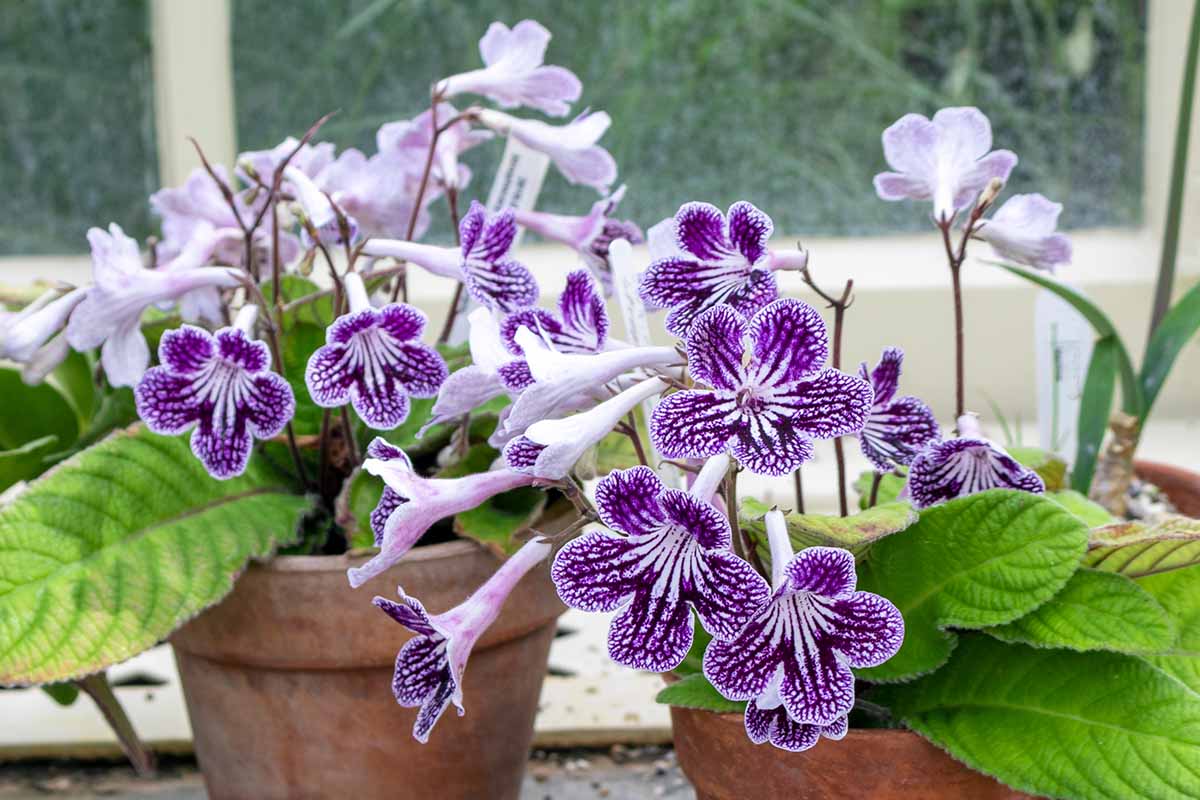
In the winter, you’ll either need to move your Cape primrose to a south-facing window (without curtains) or provide supplemental light.
If you live in an area with frigid winters, move the pot a few feet away from the window while still keeping it in direct light. Otherwise, your plant will be exposed to cold temperatures.
Speaking of, Cape primroses should never be exposed to temperatures below 45°F.
The soil should remain consistently moist from March through September, with just the surface allowed to dry out between waterings. From October to February, the top half of the soil should dry out before you water again.

You should always test the soil with your finger before watering. Plants take up moisture at different rates depending on the time of year, the age of the specimen, and the condition of the soil.
During the March through September growing period, feed your Streptocarpus every second week with a mild, balanced fertilizer or a stronger fertilizer diluted by half. If you overfeed, the plant will produce lots of big leaves but no flowers.
The exception in both the watering and fertilizing timing is with those hybrids that bloom year-round. These should be fed and watered as you would in the summer for as long as they are blooming.
Dr. Earth makes a nice, balanced, mild fertilizer in a handy 16-ounce pump container.
Dr. Earth Pump and Grow Fertilizer
If you’d like to pick some up, head to Arbico Organics.
Plants that are overfed or growing in alkaline soil will tend to have foliage that turns purple. Aim for a pH of around 6.0 to 7.0.
Cape primrose needs a good amount of humidity to thrive, especially in the winter when the air tends to be drier. Do your best to keep the humidity above 50 percent.
If your home isn’t that humid, you can keep your Cape primrose in a bathroom, by the kitchen sink, or use a small humidifier near the plants.
I like to use humidifiers that emit a fine mist rather than those that have larger droplets. You want to raise the humidity, not water your plants. Avoid those that heat the water.
Something like the top-fill humidifier from Levoit, which can hold two and a half liters of water and has an auto shut-off when the water runs out, is ideal. Nab one at Amazon.
If you can’t provide enough humidity, you’ll probably see some browning of the leaf edges and tips.
Growing Tips
- Provide bright, indirect light with some direct sun in the morning.
- Allow the surface of the soil to dry out between watering in the summer. Reduce water in the winter.
- Choose wide pots with drainage holes.
Pruning and Maintenance
Other than snipping off any dead, diseased, or deformed leaves, your main job with trimming is to remove spent flowers at the base. As they age, the older, outer leaves will die. Snip these off.
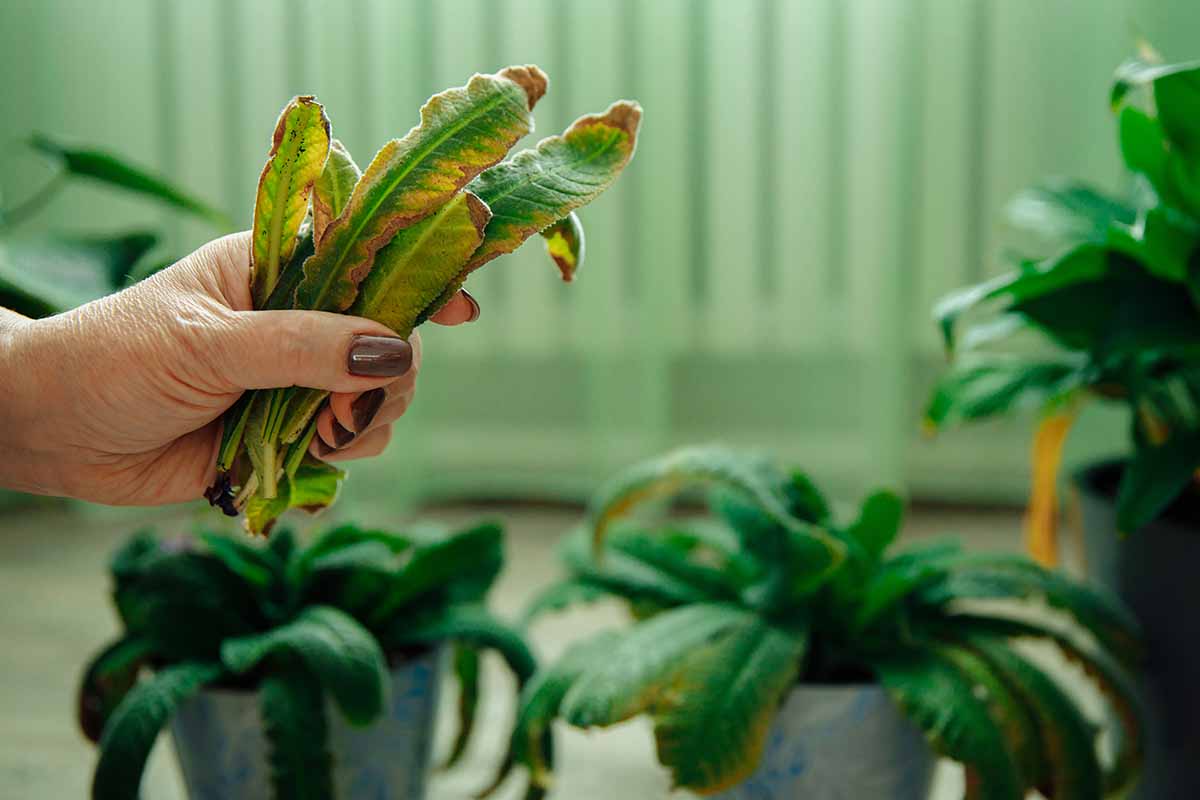
You will need to repot Streptocarpus every few years, whether you upgrade the pot size or not. That’s because soil tends to become depleted, compacted, or hydrophobic over the years.
You’ll need to move up a pot size or divide the plant if you start to see roots coming out of the drainage holes.
If you decide to go up a size, choose a container that is one size up from the existing one. If you go up larger than that, you run the risk of your plant suffering from root rot.
For instructions on repotting or dividing, visit the propagation section above.
Streptocarpus Cultivars to Select
As I mentioned, Cape primroses can be a little hard to find unless you visit specialty retailers.
If you do find them at a large retailer, they’re usually listed under the generic name with no information about the parentage. That doesn’t make them any less lovely, though.
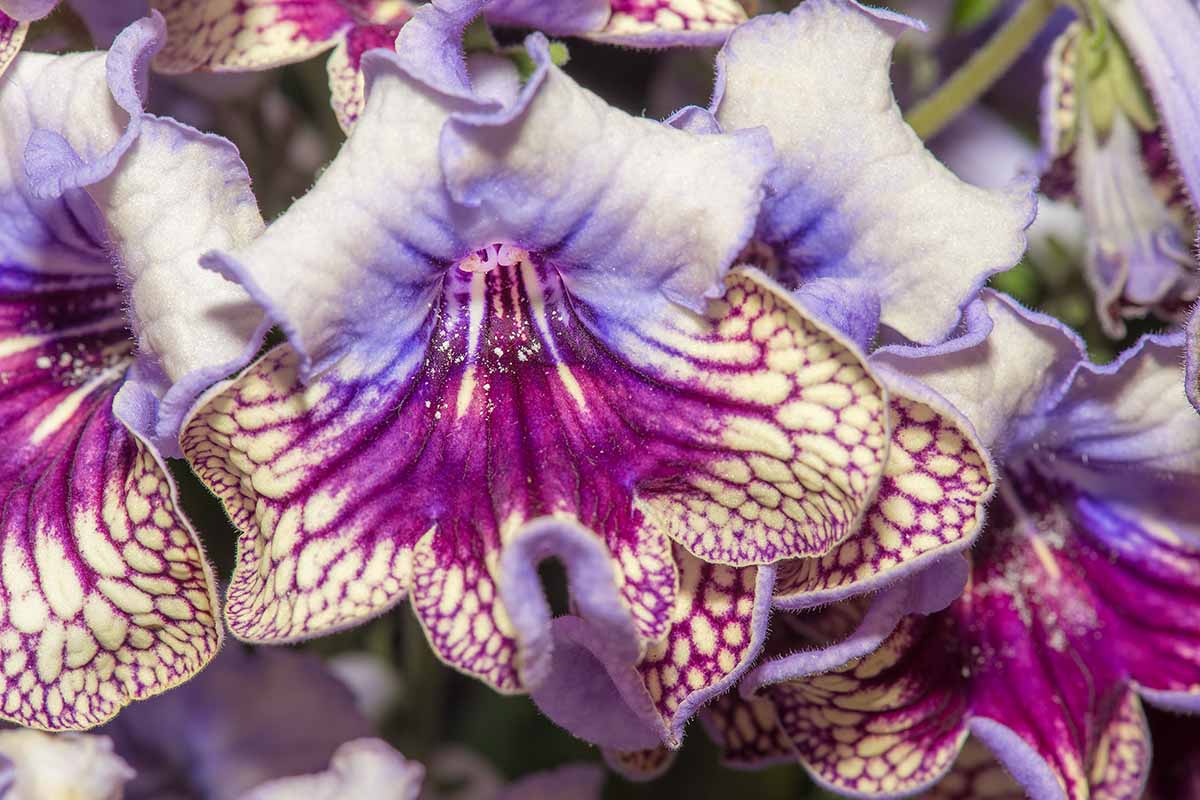
Remember how we talked about the two types of growth habits? They can be either stemmed or rosette types, but most will be rosette. We’ll call out any that are stemmed types.
Let’s talk about Boysenberry Delight first.
Boysenberry Delight
With cheerful purple flowers and a sweet, arching growth habit, ‘Boysenberry Delight’ is begging for a hanging basket to highlight it.
Bring one home in a two-and-a-half-inch pot from Walmart.
Crystal Series
This series is exceptional because the plants often continue to flower throughout the year, even in the fall and winter when other Cape primroses stop blooming.
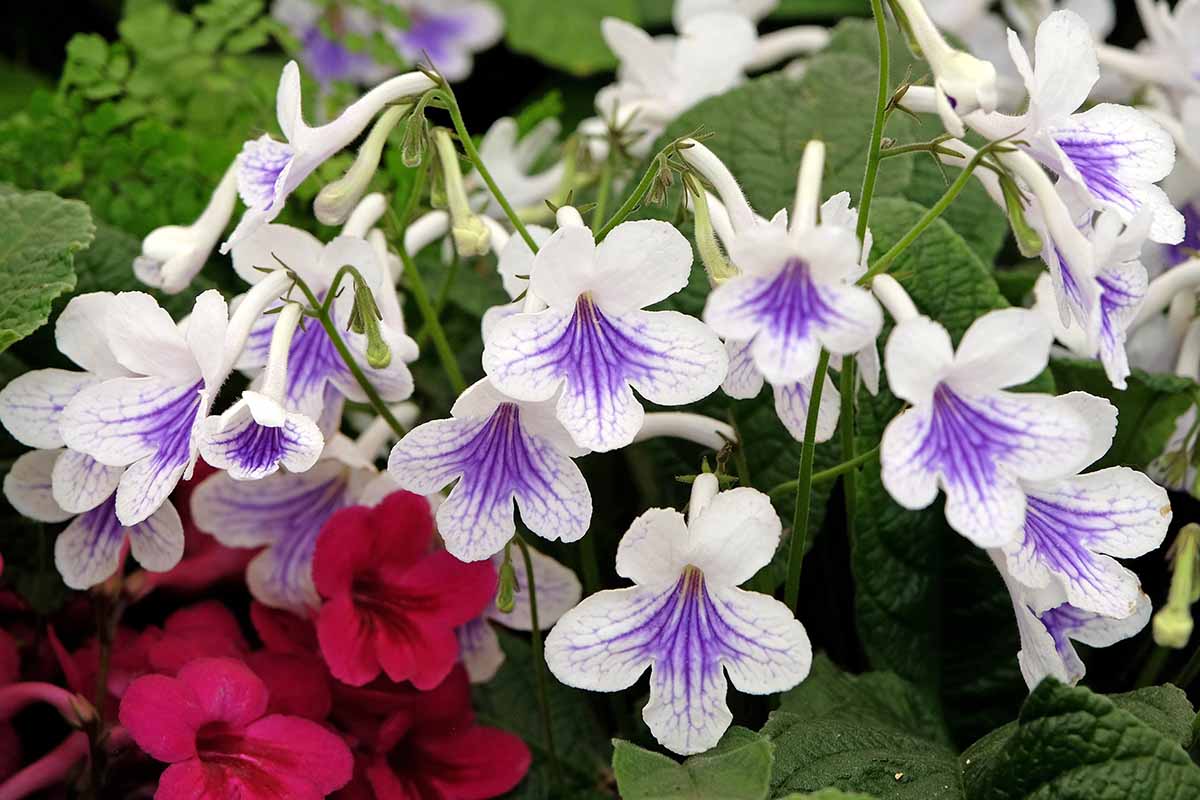
The series includes cornflower blue and deep purple ‘Crystal Beauty,’ pink ‘Crystal Blush,’ white and fuchsia ‘Crystal Dawn,’ white and violet ‘Crystal Ice,’ pure white ‘Crystal Snow,’ and reddish-violet ‘Crystal Wonder.’
Eternity
Streptocarpus flowers are beautiful, but ‘Eternity’ takes things to the next level. The big, bold magenta blossoms are large and double, with pale pink between the veins.
A hybrid sport of ‘Dimetris,’ a popular cultivar with vibrant violet and white flowers, this rosette-type will flower intermittently all year long.
Gold
‘Gold’ is a gorgeous hybrid that features bright yellow blossoms with white throats.
The edges of the petals are rippled and the flowers are heavily fragrant. A repeat bloomer on rosette-arranged leaves, it is one of the few truly bright yellow hybrids.
Harlequin Lace
Looking for a flower that resembles the most elegant violet? ‘Harlequin Lace’ is it.
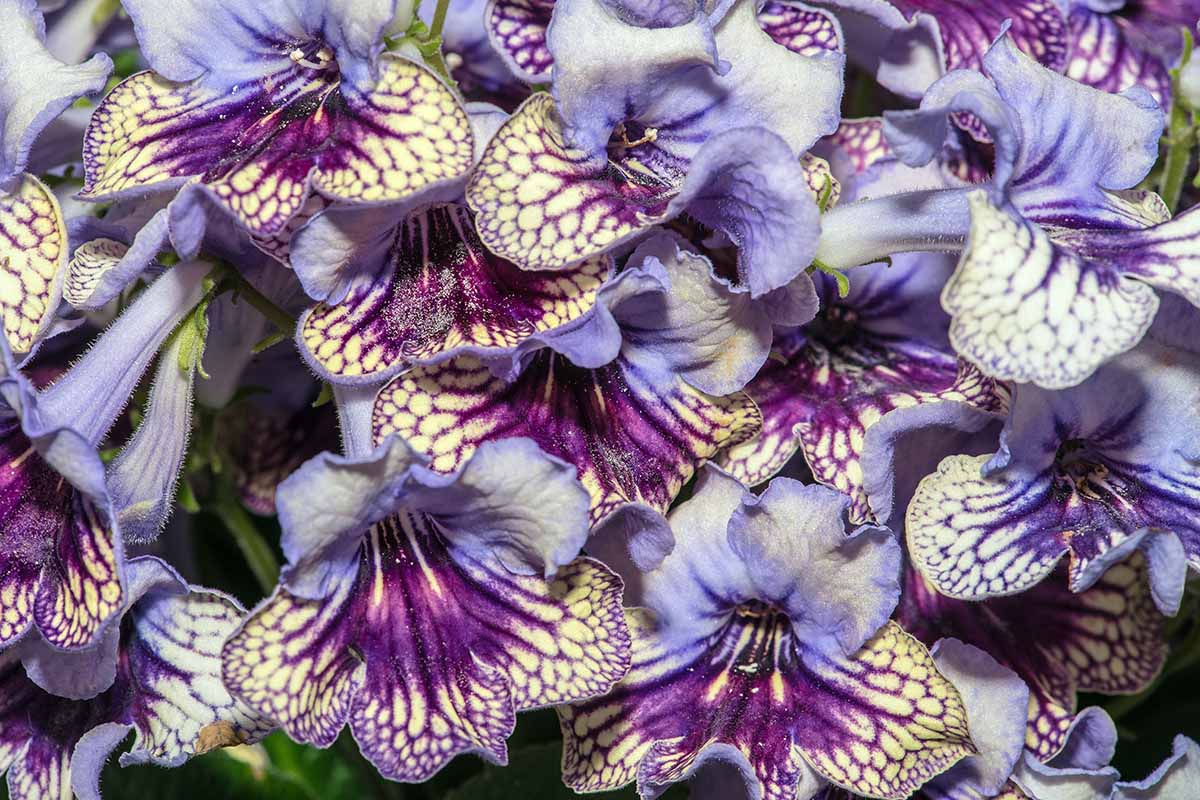
The large flowers are blue, violet, cream, and yellow, with the color following the veins of the bloom surrounding the cream and yellow interior. At a glance, the pattern appears to be lace-like.
This cultivar was awarded the Royal Horticultural Society Award of Garden Merit in 2013 for its impressive blossoms that persist for months and months.
Wow
‘Wow’ is aptly named. The large, two-inch wide blossoms on this rosette type are bright reddish pink on top and creamy yellow on bottom, with reddish pink edging along the ruffled petals.
It will bloom intermittently throughout the year.
Managing Pests and Disease
One of the best things about Cape primroses is that they are marvelously untroubled by pests and disease, particularly when you grow them indoors.
A few of the old familiar houseplant pests might attack them, and we’ll talk about those first.
Pests
The chances that pests will choose to chomp on your Cape primroses are low if you keep your plants healthy.
Those kept in low light conditions or that are underfed will be more susceptible to pest problems.
Aphids
If you grow houseplants long enough, you will encounter aphids. Don’t stress too much. If you act before the stems are entirely covered in aphids, they aren’t too damaging or difficult to deal with.
If you notice yellowing foliage, a sticky, clear substance on your Cape primroses, or the small, oval insects themselves, grab the plant and put it in your sink or tub. Then, spray it with a stream of water to knock the aphids loose.
Wash them down the drain and put your plant in a time out. You don’t want it hanging out with your other houseplants and spreading the problem around.
Do the spray wash once a week until you don’t see any further evidence of bugs.
If you don’t want to go this route or you have a big infestation, spray with neem oil or insecticidal soap to kill the little jerks.
You can learn more about how to deal with aphids in our guide.
Spider Mites
Spider mites are itty-bitty tick relatives that feed on the sap of many different houseplants. Most of the time, you’ll notice fine webbing on your plants before you’ll see the pests themselves.
If you look closely, the webs might be filled with debris, which is the exoskeletons left behind as the mites molt.
Treating them takes a multi-pronged approach, which you can learn about in our guide.
It involves isolating your plant, spraying it with water to knock the suckers loose, and an insecticide to kill any that remain.
Whiteflies
When it comes to Cape primroses, whiteflies are more common in greenhouses than the home, but they love to hitch a ride on newly-purchased Cape primroses.
That’s why you should always inspect your new additions before introducing them to the clan.
If sapsucking whiteflies do manage to find your plants, wash them off with a strong stream of water, and visit our guide for more information.
Disease
This plant is one tough cookie when it comes to disease. It’s rare that you’ll encounter a problem, but if you do, it’s probably going to be rot:
Stem and Leaf Rot
Stem and leaf rot isn’t a disease but a physiological issue. It happens when water splashes on the foliage and the moisture pools at the base of the leaves, causing them to rot.
If you see this, remove the rotting leaf or stem section immediately and be extra careful in the future to water the soil at the base of the plant and avoid wetting the foliage. In general, this is good advice for all plants.
Best Uses for Cape Primroses
Whether you pot them up individually as a single specimen or group them for a larger display, these flowering beauties are going to stand out.
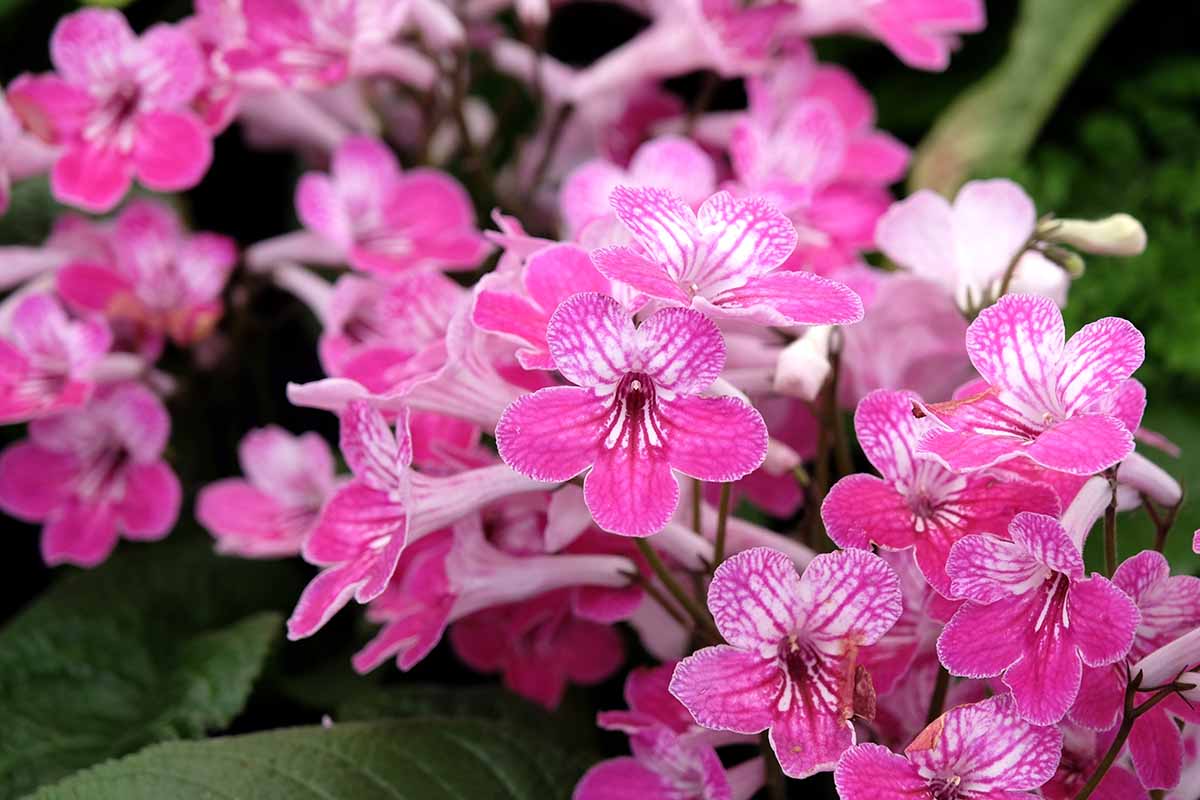
You could also put those with an arching growth habit in a hanging basket or wall-mounted pot for something a little different.
Quick Reference Growing Guide
| Plant Type: | Herbaceous flowering perennial | Flower/Foliage Color: | Blue, pink, purple, red, white, yellow, bicolored, tricolored / green |
| Native to: | South Africa | Maintenance: | Low |
| Hardiness (USDA Zone): | 9-11 | Tolerance: | Some drought |
| Bloom Time: | Most spring, summer, some year-round or intermittent | Soil Type: | Loose, loamy |
| Exposure: | Bright, indirect light with some direct sun | Soil pH: | 6.0-7.0 |
| Time to Maturity: | 3 years | Soil Drainage: | Well-draining |
| Spacing: | 3 inches | Uses: | Specimen, hanging pots |
| Planting Depth: | Surface sow (seeds), same depth as original container (transplants) | Order: | Lamiales |
| Height: | 18 inches | Family: | Gesneriaceae |
| Spread: | 18 inches | Subfamily: | Didymocarpoideae |
| Growth Rate: | Moderate | Genus: | Streptocarpus |
| Water Needs: | Moderate | Subgenus: | Streptocarpella, Streptocarpus |
| Common Pests and Diseases: | Aphids, spider mites, whiteflies; Stem and leaf rot | Species: | Glandulosissimus, parviflorus, rexii, saundersii, saxorum |
Stick With Streptocarpus for a Year-Round Flowering Display
Like I said, I’d be willing to coddle a Cape primrose just so I could enjoy the flowers, but as you can see, you don’t really have to. They’re pretty easygoing.
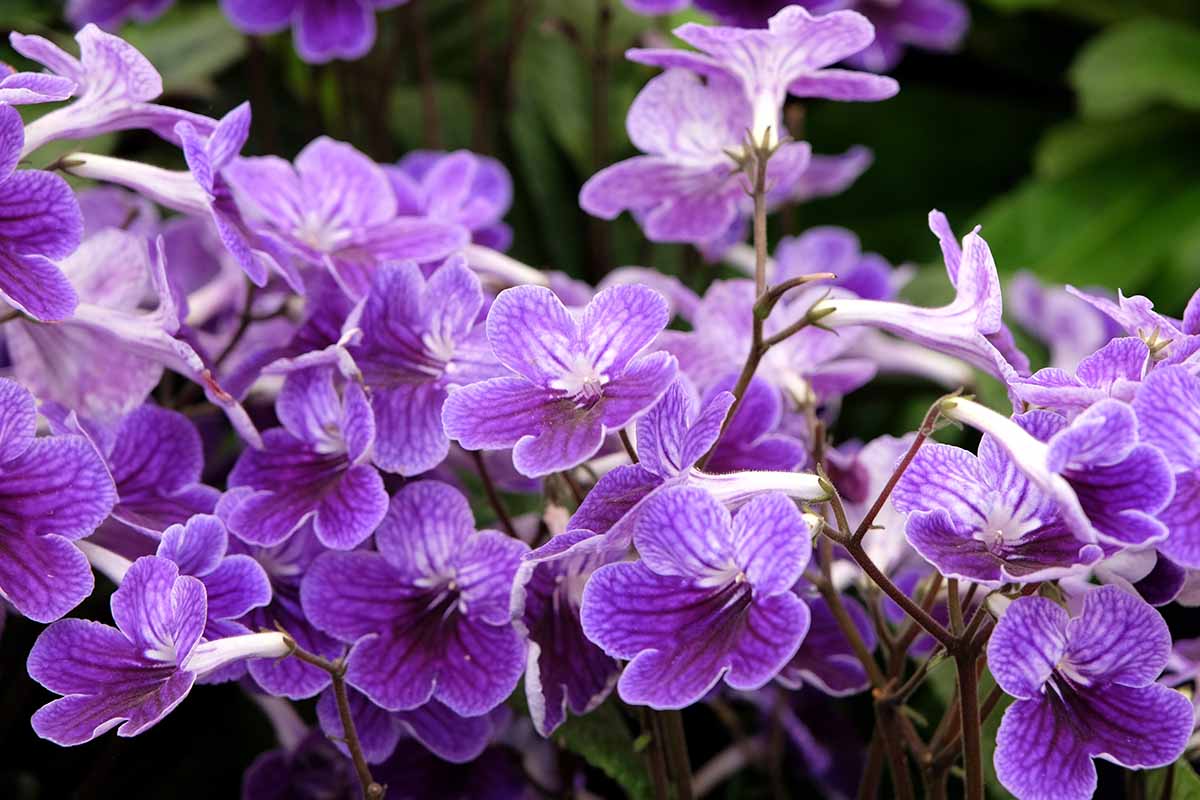
Have you managed to find one in your neck of the woods? What color is it? Let us know all about your stunner in the comments section below.
Then, if you want to learn about a few friends for your Cape primrose, consider checking out these houseplant guides next:
